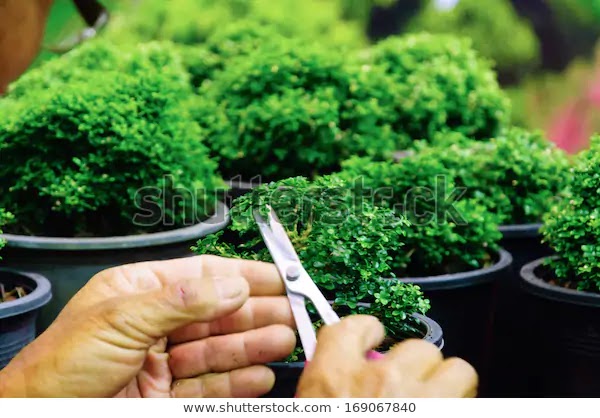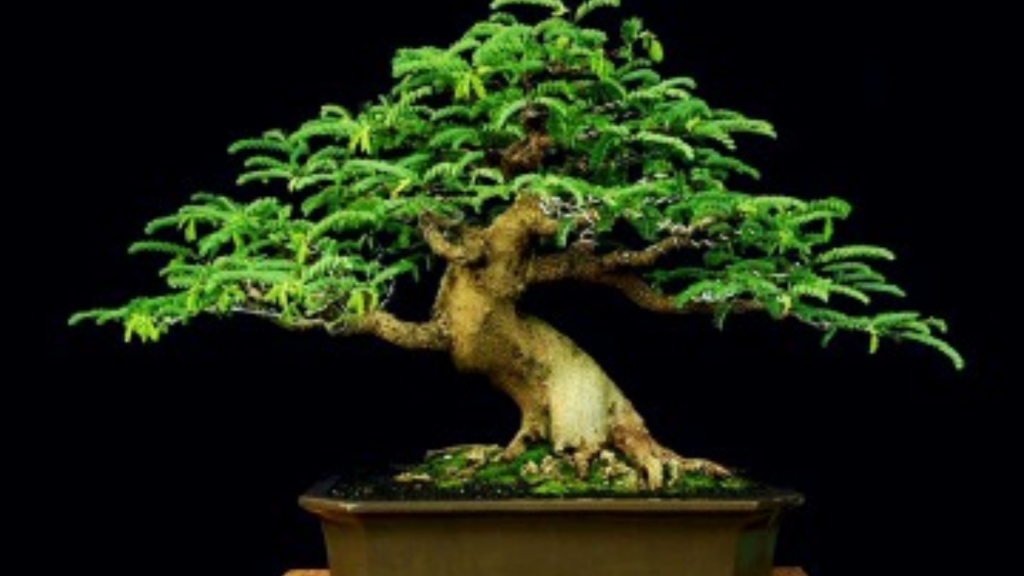Will bonsai tree root pruning inhibit growth?
Pruning bonsai tree roots can inhibit growth. However, what I found, it is essential for maintaining its overall health and managing its size. Proper root pruning ensures precise water and nutrient absorption, prevents root tangling, and encourages new, healthy root growth.
Bonsai trees have captivated people’s hearts for centuries with their miniature beauty and graceful charm. These captivating living artworks require careful and precise care, including regular root pruning.
While there may be concerns about inhibiting growth through this practice, it is essential for maintaining the overall health and management of these intricately trained plants.
Root pruning helps ensure accurate water and nutrient absorption, prevents tangling and decay, and encourages the growth of new, healthy roots.
We will explore the effects of root pruning on bonsai trees and the important role it plays in their overall growth and development.
What Is The Process Of Bonsai Tree Root Pruning?
Bonsai tree root pruning is the practice of selectively cutting and trimming the roots of a bonsai tree to promote better growth, optimize root distribution, and maintain a healthy balance between the tree’s root system and its above-ground portion. This careful and precise process helps create the aesthetic and miniature appearance that characterizes a bonsai tree.
Importance Of Pruning For Bonsai Trees
Pruning the roots of a bonsai tree plays a vital role in the overall health and development of the tree. Here are some reasons why root pruning is essential:
- Improved root health: By pruning the roots, damaged or diseased portions can be removed, allowing the tree to focus its energy on healthy root growth.
- Enhanced nutrient absorption: Root pruning promotes the development of fine feeder roots, which are responsible for absorbing water and nutrients from the soil.
- Controlled growth: By pruning the roots, you can limit the overall size of the bonsai tree, ensuring it remains in proportion to the container or display area.
Factors To Consider Before Pruning Bonsai Tree Roots
Before diving into root pruning, it’s crucial to consider several factors to ensure the health and success of your bonsai tree. These factors include
Tree species and their specific pruning requirements: Different bonsai tree species have varying root pruning needs. Understanding the specific requirements for your tree species is crucial to ensure proper root pruning without compromising its health.
Timing and frequency of root pruning: Bonsai tree root pruning is typically performed during the tree’s dormant period when it’s less vulnerable to stress. The frequency of root pruning will depend on the tree’s growth rate and the desired bonsai style.
Tools and techniques used for root pruning: Employing the right tools, such as root shears or bonsai knives, and utilizing proper techniques, such as root combing or slicing, are essential for effective and safe root pruning.
Tree Species And Their Specific Pruning Requirements
Each bonsai tree species has its own unique characteristics and requirements when it comes to root pruning. Here are some examples:
| Tree Species | Pruning Requirements |
| Juniper | Requires regular root pruning every 1-2 years to maintain optimal health and balance. |
| Maple | Needs root pruning every 3-4 years, as its roots tend to grow quickly and can cause pot overcrowding. |
| Pine | Requires infrequent root pruning every 5-6 years to prevent excessive root confinement and promote stable growth. |
Timing And Frequency Of Root Pruning
The timing and frequency of root pruning are crucial to ensure the overall health and well-being of your bonsai tree.
The dormant season, typically during late winter or early spring, is the ideal time to perform root pruning as the tree’s growth is minimal, reducing the risk of stress and damage.
The frequency of root pruning will depend on the tree species and its growth rate, ensuring that the tree remains healthy and balanced.
Tools And Techniques Used For Root Pruning
When it comes to root pruning, using the right tools and techniques is essential for effective and safe pruning.
Some commonly used tools for root pruning include root shears, bonsai knives, and root hooks.
Techniques such as combing, slicing, or air pruning are employed depending on the tree species and individual requirements, ensuring that the root system is carefully pruned while minimizing stress to the tree.
How Root Pruning Affects The Growth Of Bonsai Trees?
Root pruning plays a crucial role in the art and cultivation of bonsai trees. As bonsai enthusiasts, it’s important to understand the impact of root pruning on the overall growth and development of our miniature trees.
Contrary to popular belief, root pruning does not inhibit growth, but rather promotes healthier and stronger root systems, controls the size and shape of the bonsai, and influences nutrient uptake and water absorption.
The Purpose Of Root Pruning
Root pruning serves several purposes that are essential to the success of bonsai tree cultivation. Firstly, it promotes the development of a compact and fibrous root system. Through careful pruning, excess or circling roots are removed, allowing the remaining roots to branch out and form a dense network.
This compact root system ensures better nutrient absorption, water retention, and overall health of the tree.
Promoting a Healthier And Stronger Root System
By removing excess roots, root pruning enables the bonsai tree to redirect its energy toward growing new, healthy roots. These new roots are more efficient in absorbing nutrients from the soil and providing stability and support to the tree.
A robust root system contributes to the overall vitality and longevity of the bonsai, ensuring its continued growth and development.
Controlling The Size And Shape Of Bonsai Tree
Root pruning allows bonsai enthusiasts to have control over the size and shape of their miniature trees. By manipulating the root system, we can limit the amount of space available for the roots to grow.
This, in turn, restricts the size of the tree above ground, maintaining the desired proportions and artistic vision. Root pruning is an essential technique for achieving and maintaining the aesthetic appeal of bonsai.
Impact On Nutrient Uptake And Water Absorption
A well-pruned root system ensures efficient nutrient uptake and water absorption in bonsai trees. By removing excess roots, we prevent competition for limited resources within the soil.
This enables the bonsai to extract essential nutrients and moisture more effectively, providing the necessary sustenance for healthy growth. Root pruning, therefore, directly influences the nutrient availability and hydration levels required for optimal bonsai tree development.
Relationship Between Root Pruning And Top Growth
Root pruning and top growth are interconnected. When the root system is pruned, it stimulates the tree to produce new feeder roots, which in turn encourages top growth above the soil level.
By maintaining a balanced root-to-shoot ratio, root pruning enables the tree to allocate its energy resources efficiently. This results in vigorous top growth, leading to the formation of dense foliage and the desired aesthetic characteristics of a well-developed bonsai tree.
Common Misconceptions About Root Pruning And Growth Inhibition
Despite its numerous benefits, root pruning is sometimes misunderstood as a practice that inhibits growth in bonsai trees. This misconception arises from the perception that removing roots would impair the tree’s ability to absorb nutrients and water, ultimately hampering its development.
However, as we’ve discussed, root pruning actually promotes healthier root systems, nutrient uptake, and overall growth and vitality. It is important to understand the purpose and techniques involved in root pruning to dispel these misconceptions and appreciate its positive impact on bonsai tree cultivation.
How To Minimize The Risks Associated With Root Pruning
Although bonsai tree root pruning poses some risks, proper care and attention can significantly minimize them. Here are some strategies to reduce the risks associated with root pruning:
- Timing and Frequency: Prune roots during the tree’s dormant period and avoid excessive pruning at once. This allows the tree to recover and minimizes stress.
- Proper Techniques and Tools: Utilize appropriate tools designed for root pruning and follow correct techniques to minimize damage and stress on the tree.
- Monitoring and Adjusting Post-Pruning Care: Regularly monitor the tree’s health and adjust watering, fertilizing, and other care practices as needed to promote recovery and growth.
Frequently Asked Questions
Should You Trim The Roots Of A Bonsai Tree?
Yes, you should trim the roots of a bonsai tree. Trimming the roots helps balance the tree’s growth and ensures proper absorption of water and nutrients. It also prevents overcrowding in the pot and promotes a healthier root system for the bonsai tree.
What Are The Disadvantages Of Root Pruning?
Root pruning can lead to several disadvantages like decreased root system, reduced stability and nutrient absorption, increased risk of transplant shock, and increased susceptibility to diseases and pests. It can also disrupt the natural balance between roots and shoots and cause plants to become slower in their growth and development.
What Is The Effect Of Root Pruning?
Root pruning has a positive effect on plant growth. It promotes new root development, enhances nutrient absorption, improves water efficiency, and increases overall plant health and vigor.
Conclusion
Bonsai tree root pruning is an essential technique that can promote the overall health and growth of a bonsai tree. While it may seem counterintuitive to cut the roots, proper pruning helps prevent root-bound situations and improves nutrient absorption. By carefully following the guidelines and techniques, bonsai enthusiasts can ensure the long-term growth and vitality of their miniature trees.


